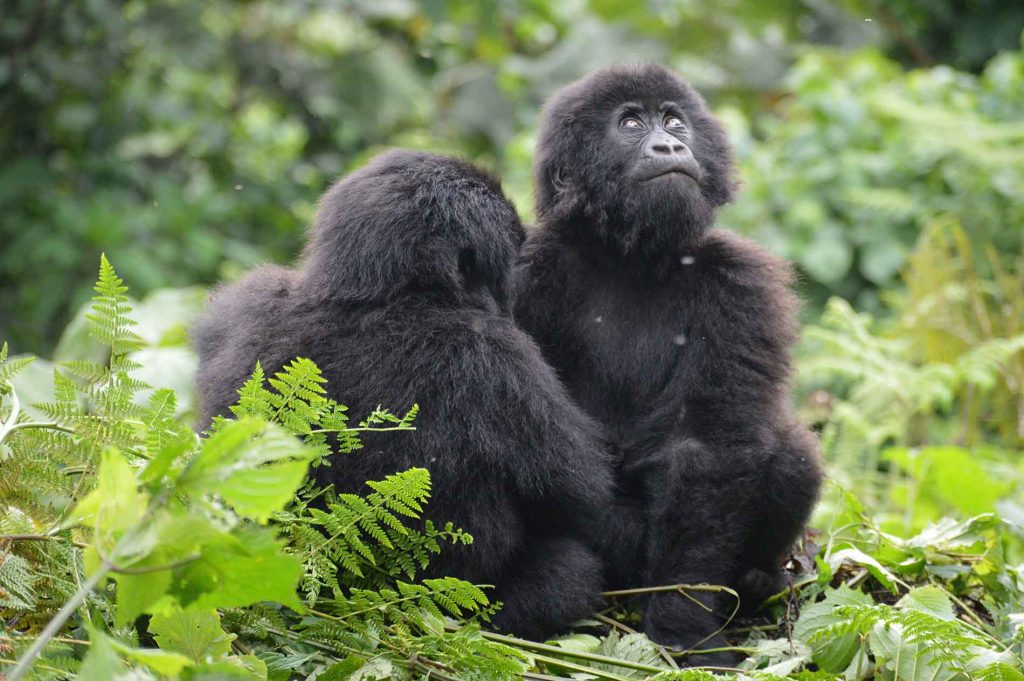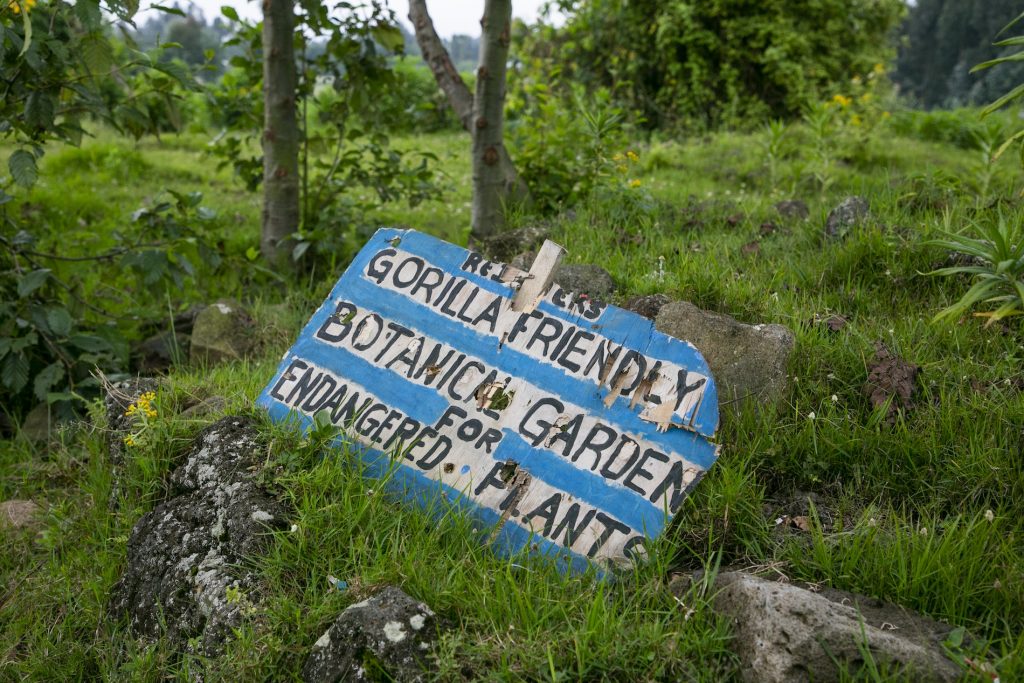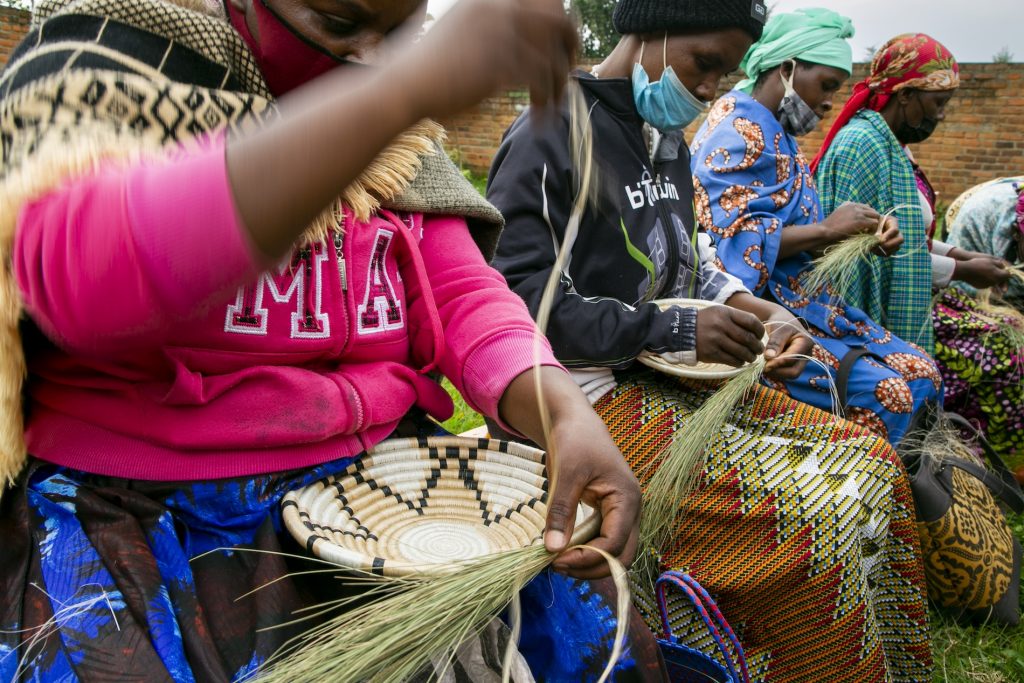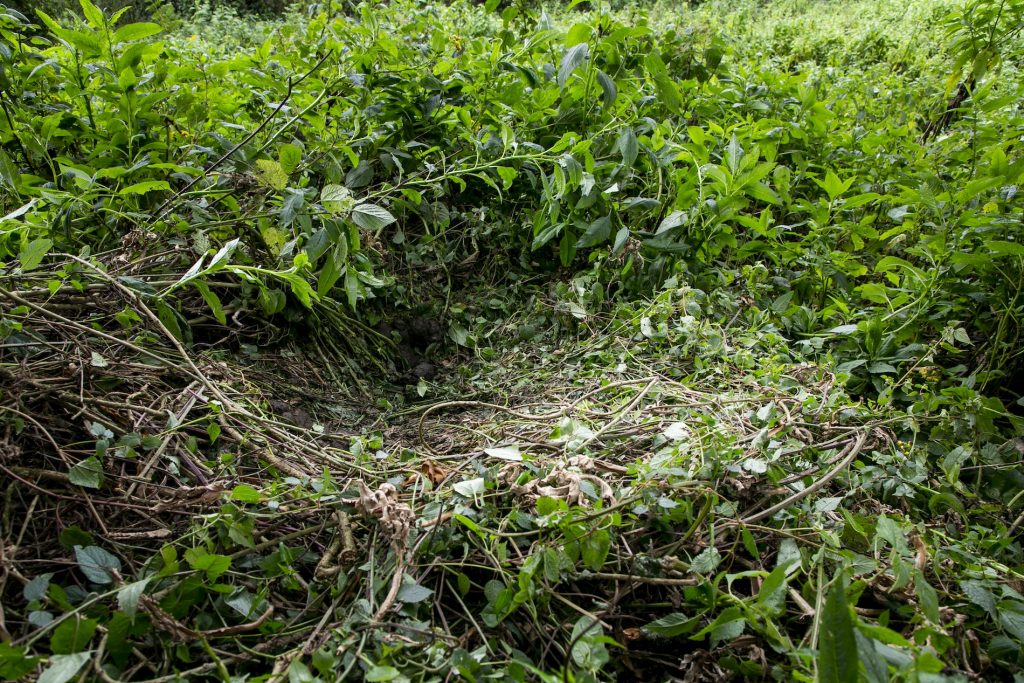Trying to encompass the breadth of work Fauna & Flora International (FFI) covers is a difficult task, so we decided to focus on one of its flagship projects as an example of its work. After much discussion and debate, we decided to spotlight its gorilla conservation project in Central Africa, as it demonstrates perfectly how a previously critically endangered species can be brought back from the brink of extinction through collaboration and putting people at the heart of conservation. Originally established by FFI in 1978 as the Mountain Gorilla Project, with support from Sir David Attenborough, the charity’s vice-president, this project has developed over time into the International Gorilla Conservation Programme (IGCP) – a collaborative effort from multiple conservation partners.

Photo credit: Angelique Todd FFI
How best to put this project into the context of a garden then? First up, I needed to base my design ideas on fact so a trip to the area in February 2022 provided the necessary inspiration for the design. The design is based on this trip to the Afromontane region of the Virunga Massif in Central Africa, where I walked from about 1500 to 3000m above sea level, therefore the garden represents a typical eco-tourist’s trek to see the endangered mountain gorilla.
This is a densely populated country with farming being a major livelihood, and there is fierce competition for land, meaning that it isn’t easy to reconcile human and wildlife needs. Through government, community and charity collaboration, a protected forest area has been established and I was surprised to see the boundary was a simple stone wall. The dividing wall is a major feature of the garden, and separates the Human Area at the front of the garden from the Protected Forest Area.
The boundary wall and Protected Forest Area are respected by local communities as eco-tourism provides livelihoods and income from visitors wishing to see the mountain gorillas. It was interesting to visit a nursery which grows medicinal plants and my expectations were rows of pots with plants in – however the plants are grown in the ground and people can buy leaves, roots and flowers harvested straight from the plant. As such, a medicinal plant area is included in the front of the garden.

Photo credit: Camilla Rhodes FFI
Many co-operatives are supported by IGCP to help local communities make artisanal goods to sell to tourists and examples will be displayed in our bright kiosk. Beekeeping is also popular as an income, and you will see traditional beehives on the boundary wall.

Photo credit: Angelique Todd FFI
Sweeping past the boundary wall and into the Protected Forest Area are simple mud tracks that wind uphill and through varying vegetation and where the gorillas are likely to be spotted. Their food, consisting of bamboo, thistles, brambles, nettles, sticky grass and other plants, makes up the central area of the garden, and a typical gorilla nest is included to show how they bed down for the night before moving on the next morning.

Mountain gorilla nest
Up towards the top of the garden are large boulders reminiscent of the Afromontane volcanic landscape, with planting that is more typical of higher altitudes. A waterfall right at the top of the garden next to a viewing platform adds drama to the landscape and the view from the top across the garden should be spectacular!
We hope this garden will help the public better understand the complexities of successful conservation and the collaboration that truly relies at its heart. We also wish to raise awareness of the importance of conservation projects like IGCP for the future of our planet. Only through collaboration, can humans truly live in harmony with nature.